
Cultural Reverence for Succulents in Asian Herbal Traditions

Introduction
In the vast tapestry of Asian herbal traditions, plants play a significant role as both medicinal remedies and symbols of spiritual significance. Among these revered plants, succulents hold a special place due to their unique adaptability, resilience, and aesthetic appeal. Succulents not only enchant with their diverse forms and vibrant colors, but they also serve vital purposes in health and wellness practices across various cultures. This article delves into the cultural significance of succulents within different Asian herbal traditions, exploring their use in medicine, symbolism, and contemporary applications.
In this exploration, we will delve deeply into how different Asian cultures—such as Chinese, Japanese, Korean, and Indian—perceive and utilize succulents. We will examine the historical roots, the current trends in herbal practices, and how succulents are interwoven into the fabric of these societies. Whether through traditional medicine, household uses, or in local folklore, succulents have emerged as symbols of life's endurance and healing properties.
Historical Background of Succulents in Asian Cultures
The use of succulents in Asian herbal traditions is not merely a modern fixation; it has roots that extend far back into history. In ancient times, various civilizations recognized the benefits of succulent plants, often through trial and error, understanding their medicinal properties and uses in folk medicine. For example, the Aloe Vera plant, known for its hydrating gel, has been used for centuries in Chinese Ayurveda for its healing properties related to skin burns and digestive issues. This plant illustrates the intersection of nature and medicine that characterizes many Asian cultures.
Historical accounts detail how traditional Chinese herbalists began documenting the benefits of various plants during the Han Dynasty (206 BCE – 220 CE). Among these recorded remedies, succulents were highlighted for their ability to thrive even in arid environments, often symbolizing longevity and resilience. This made them a popular choice not only in medicinal practices but also in feng shui. Placement of succulents in homes was believed to attract positive energy, enhance productivity, and promote healing, further embedding these plants into the cultural ethos.
Furthermore, in Indian Ayurveda, the use of succulents can be traced back to texts dating over 2,000 years. The Crassula plant, commonly called the jade plant, is noted for its wealth-attracting properties. It represents the philosophy of abundance and prosperity, making it a popular choice in households not just as a beautiful plant, but also as a tool for manifesting wealth and good health. The reverence shown toward these plants is indicative of a broader cultural appreciation for nature’s ability to nurture and heal."
Symbolism of Succulents in Different Cultures
Chinese Culture and Succulents
In Chinese culture, succulents are not only valued for their medicinal benefits but also for their symbolism. Plants such as jade plants (Crassula ovata) and Haworthia are commonly thought to vibrate with good fortune and prosperity. Succulents are often gifted during significant occasions like the Chinese New Year as they are believed to bring luck and amplify the positive energy within a home. The belief in their protective qualities is often reinforced through the practice of feng shui, where the strategic placement of jade plants is thought to enhance the flow of wealth in one’s environment.
Moreover, in traditional Chinese medicine (TCM), specific succulents such as Aloe Vera are employed for their cooling properties. They are used to treat conditions related to heat in the body, such as inflammation and external burns. The gelatinous substance found in Aloe leaves is believed to nourish the body's internal organs while simultaneously promoting external healing. This dual functionality further emphasizes how succulents achieve a balance of aesthetics and practicality in Chinese herbal wisdom.
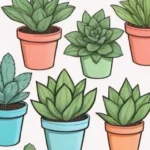 How Succulents Became Fashionable in Modern Cultural Landscapes
How Succulents Became Fashionable in Modern Cultural LandscapesJapanese Tradition and Succulent Plants
Japanese culture also showcases a profound admiration for succulents, particularly through the practice of Ikebana, the Japanese art of flower arrangement. This ancient tradition highlights the beauty and serenity of plants, contributing to the overall harmony of a space. Succulents, with their unique shapes and minimalistic forms, have become popular within the Ikebana community, representing resilience amidst the impermanence of life—an essential tenet of Zen philosophy. Each arrangement is crafted with care, resulting in a striking visual that invites appreciation for both the plants and the art form.
On a more practical note, Japanese herbal practices have incorporated succulents such as Aloe into their traditional medicine. Aloe leaves are used to create topical ointments aimed at healing burns, minor abrasions, and skin conditions. The Japanese approach focuses on the plant's natural anti-inflammatory and antiseptic properties, reflecting a broader cultural inclination to seek natural remedies derived from nature. The careful cultivation of succulents in Japanese gardens also fosters an appreciation for nature’s beauty and resilience, reminding visitors of mankind's connection with the environment.
Korean Culture's Connection with Succulents
In Korea, succulents are cherished both aesthetically and medicinally. The Hoya plant, commonly known as the wax plant, is favored for its enchanting blooms and is thought to bring good fortune to households. These plants are commonly found in homes, especially during celebrations as a means to invite positive energy and fertility into one’s life. Moreover, various succulents such as Aloe have been integrated into holistic healing practices, contributing to natural skincare regimens and traditional remedies for digestive disorders.
Koreans often participate in the practice of saenghwa, a form of herbal medicine that emphasizes the balance of elements within the body. Succulents are perceived as elements that contain earthy wisdom, reflecting a deep respect for nature and its contributions to well-being. Their medicinal usage, coupled with their cultural symbolism of prosperity and durability, illustrates the multi-faceted roles succulents play in everyday Korean life.
Modern Applications of Succulents

While the historical significance of succulents in Asian herbal traditions is remarkable, their modern applications continue to evolve. With growing interest in sustainable living, many individuals embrace succulents, not just for decoration, but as essential components of their health regimen. Gardening enthusiasts across Asia are increasingly cultivating a range of succulents at home, recognizing their low maintenance and enriching benefits to mental health. Gardening with succulents provides a therapeutic outlet, fostering mindfulness and creating a direct connection to nature.
Moreover, contemporary herbal practices have seen a resurgence in the popularity of herbal remedies, with succulents playing a significant role. The health and wellness industry has begun to incorporate extract and essence from succulents into skincare products, demonstrating their utility beyond mere ornamental uses. For instance, Aloe Vera gel has become a crucial ingredient in beauty products known for soothing and moisturizing properties.
 The Role of Succulents in Traditional Medicine Practices Worldwide
The Role of Succulents in Traditional Medicine Practices WorldwideOnline platforms and social media have also fueled the growing awareness of succulents' importance, leading to online communities dedicated to shared knowledge about their cultivation and uses. These groups often discuss benefits related to physical health, ecological sustainability, and environmental wellness, inspiring a new generation to cultivate and respect these ancient plants.
Conclusion
In summation, the cultural reverence for succulents in Asian herbal traditions illustrates a profound relationship between people and nature. Across various cultures, succulents have emerged as symbols of resilience, healing, and prosperity. The historical significance of these plants is cherished and celebrated through traditional herbal practices, art, and contemporary gardening.
From their medicinal uses in ancient herbal systems to their symbolic representations in cultural practices, succulents have consistently played an essential role in the lives of many across different regions of Asia. Their beauty and functionality serve as a testament to the belief that nature has the power to heal, enrich, and inspire. As modern practices continue to evolve, the incorporation of succulents into daily life not only celebrates their historical significance but also encourages a harmonious relationship with nature as we navigate the complexities of contemporary living. By embracing succulents, we honor the past while nurturing a bright future imbued with sustainability, health, and holistic well-being.
If you want to read more articles similar to Cultural Reverence for Succulents in Asian Herbal Traditions, you can visit the Cultural Significance category.

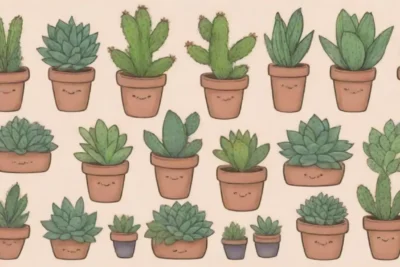
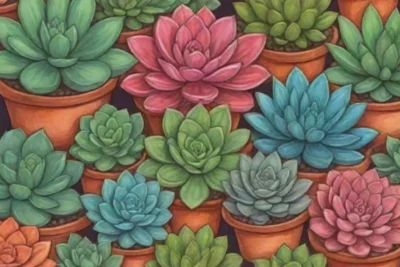

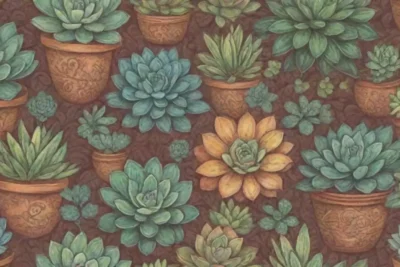
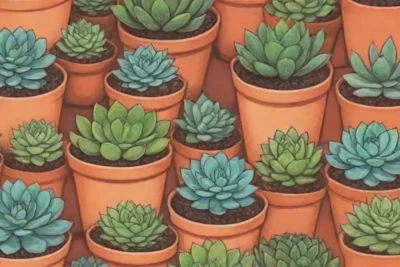
You Must Read